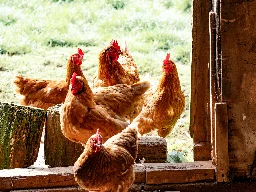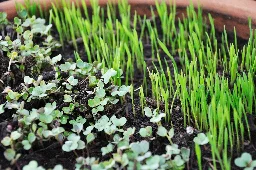Nutrition
- phase 1: Don't care about diet.
phase 1: Don't care about diet. phase 2: Try to lose weight. phase 3: Don't care at all about diet. phase 4: Ascetic diet of mostly rice and peanuts. phase 5: Vitamin A deficiency. phase 6 (current): Carefully fine-tuned diet designed with nutrition calculator.
I can't explain it, that's just how it went.
- Why eating two burgers could be healthier than adding a side of fries, according to a nutritionist | London Evening Standardwww.standard.co.uk A nutritionist says we should eat more burgers
Instead of adding fries to that order, you might want to consider a second burger.

This is an old article, but I've just seen this story, so sharing it.
- By growing animal cells in rice grains, scientists dish up hybrid foodwww.eurekalert.org By growing animal cells in rice grains, scientists dish up hybrid food
From lab-grown chicken to cricket-derived protein, these innovative alternatives offer hope for a planet struggling with the environmental and ethical impacts of industrial agriculture. Now, Korean scientists add a new recipe to the list—cultured beef rice—by growing animal muscle and fa...

- vitamins for eye health -- and relevant foods -- crowdsourcing appreciated!www.myfooddata.com Top 10 Foods Highest in Lutein and Zeaxanthin
Foods high in Lutein and Zeaxanthin include dark leafy greens, peas, summer squash, pumpkin, brussels sprouts, broccoli, asparagus, lettuce, carrots, and pistachios.

cross-posted from: https://slrpnk.net/post/6374430
> Couple people in my family have become diligent about taking vitamin supplements daily for eye health. They’ve been taking “Vision Defender” by “Intelligent Formula”, which apparently just contains 3 ingredients: > > * Meso-Zeaxanthin > * Lutein > * Zeaxanthin > > One of them went to the driver license authority and took the eye test without his glasses, passed, and was able to have the corrective lenses restriction removed from his license. It’s pure anecdote.. I wouldn’t put too much stock into vitamins having that effect. But noteworthy nonetheless. They pay $30 for 90 capsules (Amazon, sadly). > > On the other side of the pond, there are a couple vitamin cocktails, one called “Nutrof Omega by Théa” and the other “PreserVision 3” by “Bausch+Lomb”. They both lack the Meso-Zeaxanthin (which is supposedly important yet rarely mentioned) but have more stuff than “Vision Defender”. All the following ingredients are in Nutrof Omega, and > “PV3”-tagged things are also in “PreserVision 3”: > > * (PV3) lutein and zeaxanthin (for the protection of the macula region of the retina from oxidative stress and signs of aging and can increase visual ability) > * (PV3) omega-3 fatty acids (support retinal health) > * (PV3) vitamins C, D and E, zinc and copper (help protect cell constituents from oxidative damage) > * (PV3) zinc (contributes to the maintenance of normal vision) -- but counteracts copper to some extent > * selenium (key antioxidant and also supports the action of vitamin E and zinc) > * resveratrol (anti-inflammatory and anti-oxidant effects, and protects retinal cells from oxidative stress) > * manganese > * B complex > > They both have a €33 price tag for 60 tablets at most pharmacies. Over 50¢/day is a bit much but at least it’s from a pharmacist and does not feed Amazon. Exceptionally, one pharmacy sells Nutrof for €22. > > Apparently vitamin A is missing from both of those supplements, which Harvard claims is relevant. But there are many other supplements.. if someone finds something more complete plz mention it. > > So then I looked for relevant foods: > > 1. Dark Leafy Greens (Spinach) > 1. Green Peas > 1. Summer Squash > 1. Pumpkin > 1. Brussels Sprouts > 1. Broccoli > 1. Asparagus > 1. Romaine Lettuce > 1. Carrots > 1. Pistachios > > Regarding the “crowdsourcing appreciated” topic line: it would help the thread if folks post other multi-vitamins with the list of ingredients, since none of the 3 I mentioned are complete. >
- Sustainability benefits of transitioning from current diets to plant-based alternatives or whole-food diets in Sweden - Nature Communicationswww.nature.com Sustainability benefits of transitioning from current diets to plant-based alternatives or whole-food diets in Sweden - Nature Communications
The authors found that replacing animal source foods with plant-based alternatives would lead to substantial reductions in environmental impacts, while meeting most nutrition recommendations and being cost-competitive with the current average Swedish diet.
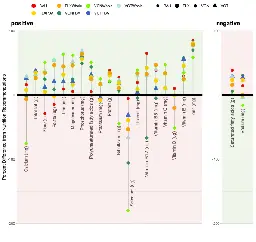
- The growing link between microbes, mood and mental healthknowablemagazine.org The growing link between microbes, mood and mental health
New research suggests that to maintain a healthy brain, we should tend our gut microbiome. The best way to do that right now is not through pills and supplements, but better food.

- We’ve never understood how hunger works. That might be about to change.www.technologyreview.com We’ve never understood how hunger works. That might be about to change.
Scientists have spent decades trying to unravel the intricate mysteries of the human appetite. Are they on the verge of finally determining how this basic drive functions?

- Plant-Based Casein for “Real” Vegan Cheese | Happy Eco Newshappyeconews.com Plant-Based Casein for “Real” Vegan Cheese | Happy Eco News
Casein is a protein in milk that gives cheese its characteristic texture and flavor. The recent AI-powered discovery of plant-based casein shows it has a

- Read This, Not That: The Hidden Cost of Nutrition Misinformationasteriskmag.com Read This, Not That: The Hidden Cost of Nutrition Misinformation—Asterisk
Our daily lives are inundated with misleading claims about nutrition. That’s not just distracting — it’s also harming our health.

- Compressing your eating day is as effective as counting calories, study findswww.latimes.com Compressing your eating day is as effective as counting calories, study finds
A study that pitted time-restricted eating against a caloric restriction diet found they were equally effective at helping obese people lose weight.

If you’re trying to lose weight and you’re sick of watching what you eat, researchers have some good news: You can watch the clock instead.
In a yearlong study, people who didn’t change what they ate — but ate it all between noon and 8 p.m. — achieved significant, sustained weight loss that was comparable to people who paid close attention to their food choices in order to cut their daily calories by 25%.
Dieters in both groups lost about 4% of their body weight after a year, researchers reported Monday in the Annals of Internal Medicine. Meanwhile, people in a control group who made no changes to their eating habits gained about 1% of their body weight in those same 12 months.
The study is the first in the U.S. to compare the two weight-loss methods head to head, said senior author Krista Varady, a nutrition researcher at the University of Illinois Chicago. Though both yielded similar results, the one that emphasized time instead of calories “is an easier diet to adhere to,” she said.
As our waistlines continue to grow, so does interest in dieting. A whopping 49% of Americans try to lose weight each year, according to the CDC. That includes 56% of women and 42% of men.
The tried-and-true way to lose weight is to burn more calories than you consume. But that’s easier said than done. Preparing low-calorie meals and keeping track of portion sizes can be expensive and time consuming, Dr. Adam Gilden and Dr. Victoria Catenacci of the University of Colorado School of Medicine wrote in an editorial that accompanies the study. It also requires a lot of discipline — not many people can withstand the temptation of a slice of cake on a co-worker’s birthday or a meal out with friends on the weekend.
In recent years, time-restricted eating (or TRE) has emerged as a popular alternative for losing weight. The idea is to compress your eating day into six or eight hours in order to reduce the amount of insulin your body produces. That’s important, because insulin prompts the body to store fat. In addition, studies have shown that people following a TRE regimen consume fewer calories each day.
TRE, a version of intermittent fasting, is certainly simpler than counting calories. But are the results the same?
To find out, Varady and her colleagues recruited 90 people who were obese and randomly assigned them to one of three groups.
The first group was asked to do all of their eating between noon and 8 p.m., then fast for the next 16 hours. (They were allowed to drink water, tea, coffee or up to two diet sodas during the fasting period.)
The second group was asked to reduce their caloric intake by 25%, or about 500 calories on average. People in both of these groups met with dietitians to help them follow nutrition advice from the American Diabetes Assn. The people counting calories also used this time to plan meals based on their food preferences.
The third group of participants was asked to stick with their usual eating and exercise routines.
After six months, the people in the TRE group lost an average of 8.8 pounds (4 kilograms) and those counting calories dropped an average of 11.2 pounds (5.1 kilos). The difference between the two groups wasn’t statistically significant.
The dieters spent the next six months in weight-maintenance mode. For the TRE group, that meant expanding their eating window to between 10 a.m. and 8 p.m. For the calorie counters, it meant increasing their caloric intake based on their new energy needs in order to maintain their weight. In both cases, they learned cognitive behavioral strategies to keep them from backsliding.
After a year, the people in the TRE group were still 7.7 pounds (3.5 kilos) lighter than when they started out, and those tracking their calories maintained 9.5 pounds (4.3 kilos) of their weight loss. Again, the difference between the two groups wasn’t statistically significant. However, both dieting groups fared much better than the control group, whose members actually gained weight (around 2.4 pounds or 1.1 kilos) over the year, according to the study.
More than 80% of the study participants were women, one-third were Black and 46% were Latino. Although this sampling does not represent the U.S. as a whole, Black and Latino Americans are more likely than white and Asian Americans to be obese. That makes the findings difficult to extrapolate to the population as a whole.
It’s not clear whether people who are overweight but not obese would see the same results with TRE, though Varady said she suspects it would still work, though perhaps to a lesser extent.
Motivated people who want to lose weight can see positive results with either method, Varady added. But in terms of accessibility and time commitment, time-restricted diets could be a better option.
“It is a simple diet,” she said. “You don’t need to buy expensive products or change things out in your pantry. You just have to decide on a time window and stick to it for as long as you can.”
In an interview, Gilden said he wasn’t convinced that people without access to professional dietitians would see the same benefits from TRE.
Varady said her team would continue to follow the study participants to see if they can maintain their weight loss for another year.
- Can we train our taste buds for health? A neuroscientist explains how genes and diet shape tastetheconversation.com Can we train our taste buds for health? A neuroscientist explains how genes and diet shape taste
Research is clear that what we eat can drive our test preferences as early as 2 years of age.

- Which Foods Have All 9 Essential Amino Acidswww.advancedchemtech.com Which Foods Have All 9 Essential Amino Acids - Advanced ChemTech
The 9 essential amino acids our bodies need but cannot produce on their own can come from a variety of dietary sources coming from both plants and animals.
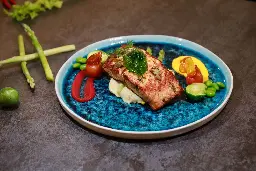
- Here’s what a lab-grown burger tastes likewww.technologyreview.com Here’s what a lab-grown burger tastes like
Companies are engineering meat in the lab. Will anyone eat it?
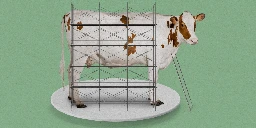
- Vegetarian tips
I was speaking to a dietician and she gave me some tips.
Said you have to eat a bunch of nuts/legumes (not as much green lentils) to get enough protein, and they also have iron. Most plants have incomplete proteins and we can't get all the amino proteins we need, but nuts/legumes have complete proteins.
b12 supplements are a good idea.
Iron supplements would be a good idea, but they cause stomach issues. But she said after eating an iron source, which is a lot of green vegetable, have vitamin C (fruit for desert) caus vitamin c helps digest iron.
Anything i'm misremembering? Or that i should consider?
---
According to https://en.m.wikipedia.org/wiki/Vegetarian_nutrition:
Protein from a variety of plant foods eaten during the course of a day supplies all essential amino acids. example, the combination of both whole rice and canned chickpeas has no limiting amino acids, that means that only consuming rice and chickpeas, in these specific quantities of 306g/day and 261g/day respectively, for long periods of time, would not result in any of the essential amino acid deficiency.
Vegetarian diets can be low in omega-3 fatty acids (O3FAs)
Vegetarians were not found to suffer from iron (Fe) deficiency more than those who ate meat.
Usually lower zinc concentration
- I've had access to food guides most of my life and I still don't know what whole grain or whole food means
I'm looking it up right now though lol, will add in definitions once I find them.
- why doesn't metamucil list what percentage of dietary fiber it has?
Bread lists how much percentage of fiber it has , it's a daily requirements percentage.
- Structural basis of sodium-dependent bile salt uptake into the liver - Naturewww.nature.com Structural basis of sodium-dependent bile salt uptake into the liver - Nature
Structural studies of human Na+–taurocholate co-transporting polypeptide in complex with nanobodies reveal mechanisms for bile salts transport and HBV recognition involving an open-pore intermediate state.


